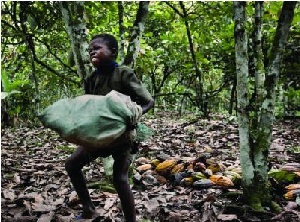The Food and Agriculture Organization (FAO) of the United Nations says almost 60 per cent of children (aged 5–17 years) in hazardous work are found in agriculture.
Historically and traditionally, it has been an under-regulated sector and one in which regulation enforcement is also difficult in many countries.
Agriculture is by far the largest sector where child labour is found and one of the most dangerous in terms of fatalities, accidents and occupational diseases. These were contained in an FAO study published this month with the title: “Children’s work in the livestock sector: Herding and beyond” and made available to the Ghana News Agency on Tuesday.
It said child labour in the livestock sector was widespread and largely ignored, pointing out that agriculture accounted for most of the reported child labour in the world, and that livestock accounted for some 40 per cent of the agricultural economy.
The report said efforts to curb child labour would require getting governments, farmer organizations and rural families directly involved in finding alternatives to practices which often reflected the need for survival.
It said hazardous or potentially harmful work for children in the livestock sector had received less attention than child labour in other areas of agriculture, where much more had been done by international organizations, governments, civil society and rural families to address the problem.
It also indicated that livestock was at least a partial source of income and food security for 70 per cent of the world's 880 million rural poor who lived on less than $1 a day.
According to the study, many situations categorized by international norms as child labour took place in unregulated, smallholder agriculture.
"For centuries, pastoralist communities have involved their children with the family livestock; the future and survival of the pastoralist family relies on the transfer of complicated local knowledge from parent to child," the study stated.
It added that there were strong signals that pastoralist communities recognized the importance of education for their children and very much appreciated sending their children to school if the education was of a good level and relevant to the pastoral way of life, and especially if schooling could be combined with child work in the herd.
It recommended that countries and development partners tackled child labour in livestock with more research on factors involved in child labour and ways to reduce it.
In addition, it called for the establishment of national regulation and policies to improve livelihoods and educational options for families.
It urged nations to develop programs that aimed to improve access to school and attendance in rural areas, and which monitored child labour
The FAO report is a compilation and analysis of available information retrieved through a literature search and consultation with organizations and experts in livestock and child labour.
The findings of the publication are expected to feed into the 3rd Global Conference on Child Labour, to be held in Brazil in October.
Business News of Tuesday, 26 February 2013
Source: GNA

















